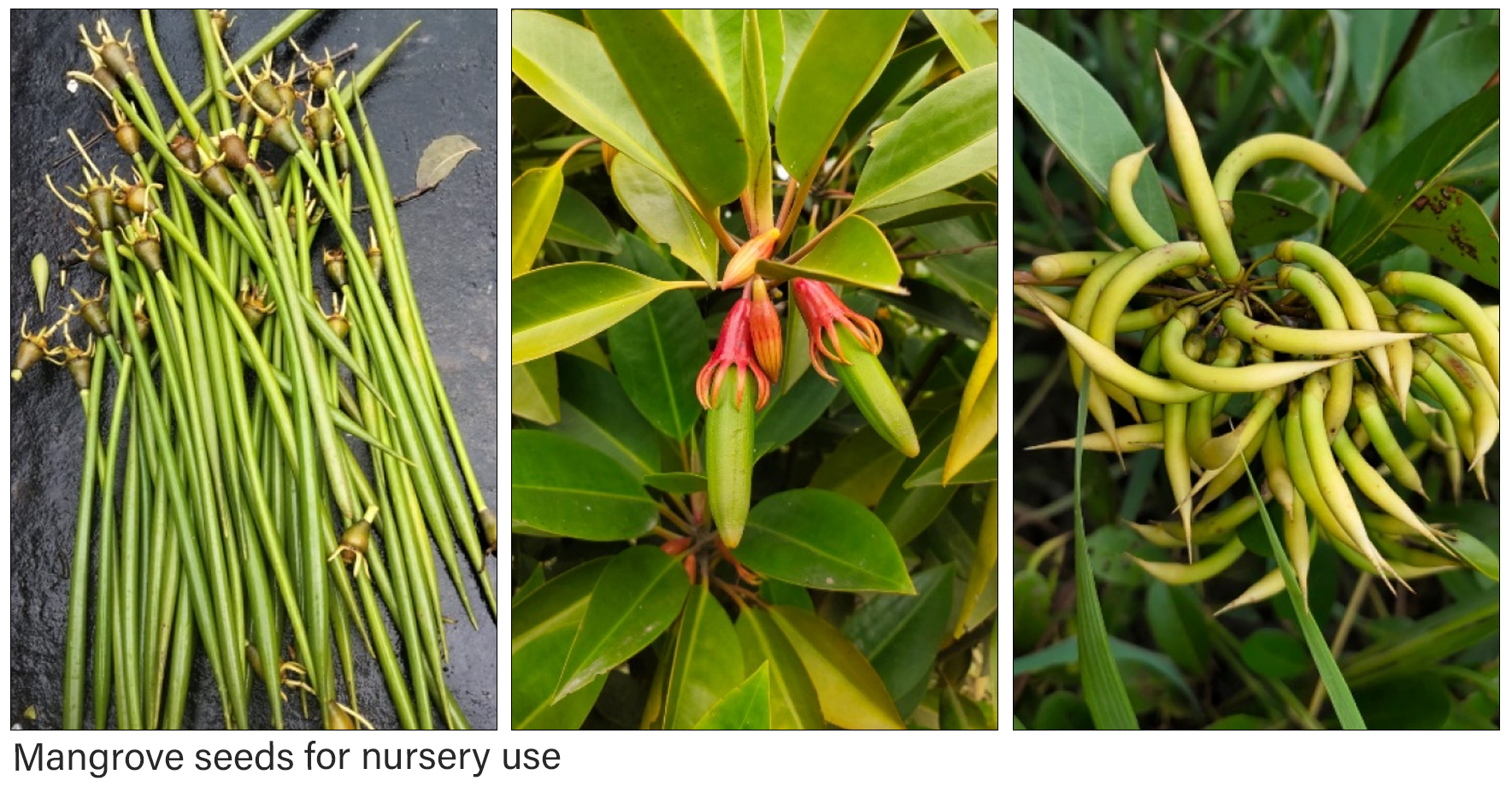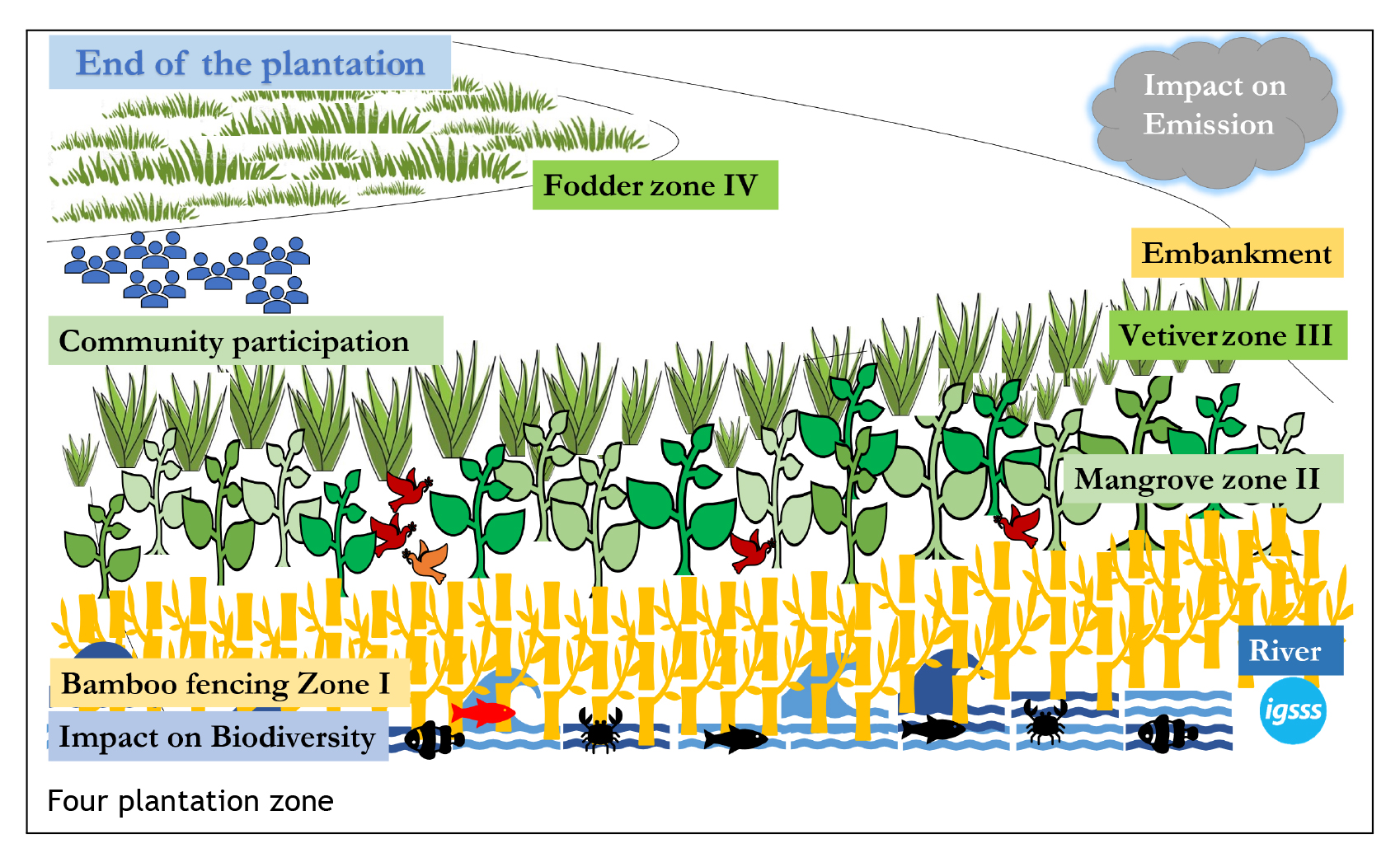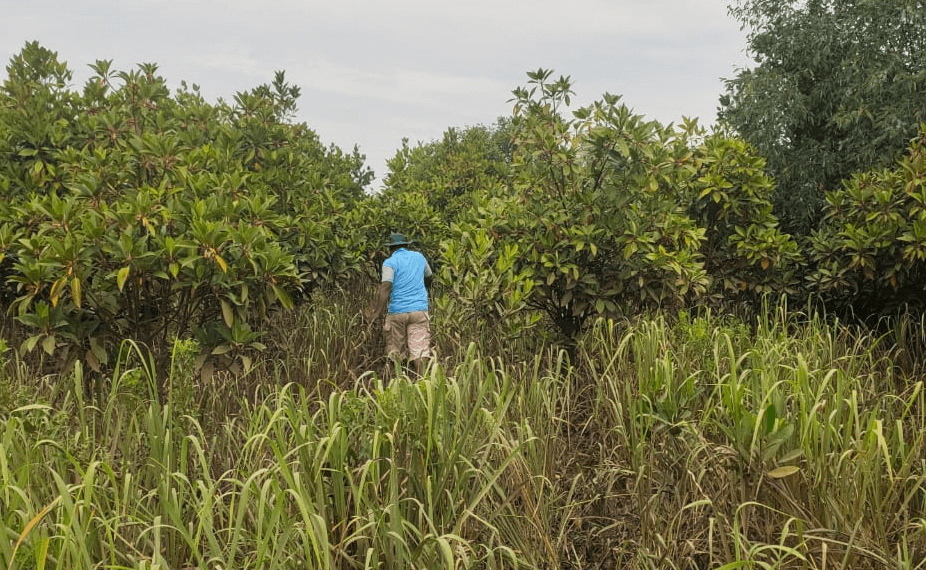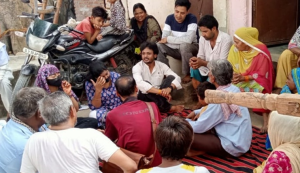An Understanding of community-led carbon sequestration through In-situ Mangrove forestation in Coastal Odisha
Carbon dioxide emissions, primarily from the combustion of fossil fuels, have risen dramatically since the start of the industrial revolution. In 2018, per capita greenhouse gas emissions were highest in the United States and Russia while India was in the 8th position. (source, International Energy Agency and Environmental Protection Agency). Globally, the primary sources of greenhouse gas emissions are electricity & thermal power (31%), agriculture (11%), transportation (15%), forest fire (6%) and manufacturing (12%). Energy production of all types accounts for 72% of all emissions. CO2 accounts for about 76% of total greenhouse gas emissions. Methane, primarily from agriculture, contributes 16% of greenhouse gas emissions, and nitrous oxide, mostly from industry and agriculture, contributes 6% to global emissions. Nationally Determined Contributions are the commitments of each country to reduce greenhouse gas emissions and adapt to climate change. The countries agreed during the Climate Change Conference of the Parties (COP) in Paris in 2015, a commitment known as ‘The Paris Agreement’. These initial commitments to decarbonize, and transition to lower carbon and renewable energy, are not sufficient to keep global temperature rise below 2.0 degrees. Every five years countries are expected to review and enhance their NDCs and submit more ambitious actions to reduce greenhouse gas emissions.
Greenhouse gas emissions in the air have a direct impact on the health of human beings. Cardiovascular disease has become very common, only due to the emissions in the air. It is like a slow onset of a pandemic. Apart from this, it is also responsible for the rising of the earth’s temperature, i.e. global warming which has several adverse impacts on human life and survivability. Hence addressing emissions in the air has become a global priority to rescue life and the environment. The CSO has a vast role in addressing emission issues in the air. Awareness to the community and important stakeholders; desk research, data collection, data analysis, and report; dialogue with the policymakers to develop and adopt sustainable policies, etc these are all in the priority of the CSOs. IGSSS is one of the CSOs which is addressing the air emission issues at the local level under community leadership. Understanding the vital role that ecosystems, such as mangroves, play in sequestering carbon and mitigating the impacts of greenhouse gas emissions adds a layer of ecological significance to these community-led efforts
1. Building understanding in the community
- The organization’s priority is to develop basic understanding and capacity building within the community so that proactive persons from the community can take the lead to address air emission issues.
- IGSSS has quality training modules, skilled facilitators, and sensitization tools, for community capacity building. Apart from this, exposure visits to the field of peer organization can enhance the confidence of the community.
- Due to this capacity building the community gains a common and simple understanding of the topics below; carbon and carbon cycle; good and bad impact of carbon on the environment; smoke/ emission in air, especially from vehicles, industries, etc; carbon footprint of a person from food, electricity, waste, transportation and water etc.
- This led the community to think how to address emissions, how to decarbonize the environment etc
2. Community-led research on in-situ social forestry
- An in-situ social forestry model has been conceptualized by IGSSS thematic experts and elderly persons from the community who have traditional knowledge and experience in addressing emissions in the air.
- This in-situ social forestry model generates forest patches in the villages i.e. the terrestrial carbon sinks which address emissions through decarbonizing the environment.
- Piloting and incubating this model under the leadership of the community. This model includes participatory management and protection of surviving forests, afforestation in barren and deforested lands, etc. Incentivizing the environment, social value addition, and sustainable development of the village is the ultimate result of this model in the long run.
- The community has some commitments to succeed in this social forestry model,
(i). Regular patrolling of the plantation patches till it attain maturity. This can minimize the risk of grazing. Patrolling of the surviving forest patches to check the illicit felling.
(ii). Fencing of the plantation patches with the thorny weeds or any natural means. This also can minimize the risk of grazing.
(iii). Intercropping with seasonal vegetables can increase the yield and ecological value of the model social forestry.
(iv). Excavation of fire-line is one of the important measures to minimize the risk of forest fire. Regular collection of dry leaves and tree remnants is highly required to minimize the fire risk.
(v). Regular weeding and excavation of traditional water harvesting structures close to the forest patch can enhance soil moisture.
(vi). Raising local nurseries can multiply the possibility of plant regeneration and minimize the risk of mortality of the seedlings planted. - A quadrant study in the neighboring forest patch is preferable to assess the dominating/ primary species of the area. This helps in species finalization for plantation. It reduces the risk of mortality of the seedlings planted
3. Participatory estimation of carbon sequestration through in-situ social forestry-
Carbon sequestration in a forest patch means the unit of carbon captured from the atmosphere and stored in the
forest patch. The carbon sequestration measurement tools are simplified so that it can be used by the villagers to
estimate the unit of carbon stored in forest patches. The carbon sequestration value varies from plant species to
species. Due to the simplifications, this tool gives an approximate estimation of carbon sequestration in the forest
patch. Below is the simple calculation for carbon sequestration measurement.
| Step | Calculations | Logics and Universal Formula |
|---|---|---|
| 1 | Determine the total green weight of the tree. The green weight is the weight of the tree when it is alive. It has two parts |
I. Calculation of the green weight of the above-ground part of the tree: D = Diameter of the trunk in inches H = Height of the tree in feet W (above ground) = 1/4 * D^2 * H (for trees with D < 11 inches) W (above ground) = 1/6.6 * D^2 * H (for trees with D > 11 inches) |
| II. Calculation of the green weight of the tree (above ground + root system): Root system weight is about 20% of the above-ground weight. Total green weight = W (above ground) + 0.2 * W (above ground)The diameter of the tree is measured by measurement tape. The height of the tree is measured by Abney’s level. above-ground weight by 120/100 W(total green weight) = 120/100 * W(above ground) |
||
| 2 | Determine the dry weight of the tree | In average, a tree contains 72.5% dry matter and the remaining 27.5% moisture. Therefore, to determine the dry weight of the tree, multiply the total green weight of the tree by 72.5%. W (dry weight) = 72.5/100 * W (total green weight) |
| 3 | Determine the weight of carbon in the tree | The average carbon content is generally 50% of the tree’s dry weight total volume. Therefore, in determining the weight of carbon in the tree, multiply the dry weight of the tree by 50%. W (weight of carbon) = 50/100 * W (dry weight) |
| 4 | Determine the weight of carbon dioxide sequestered in the tree | CO2 has one molecule of Carbon and 2 molecules of Oxygen. The atomic weight of Carbon is 12 (unit) and the atomic weight of Oxygen is 16 (unit). The weight of CO2 in trees is determined by the ratio of CO2 to C is 44/12 = 3.67. Therefore, to determine the weight of carbon dioxide sequestered in the tree, multiply the weight of carbon in the tree by 3.67. W (weight of carbon dioxide) = 3.67 * W (weight of carbon) |
The measurement of diameter and height of the trees and the calculations to estimate an approximate carbon stock captured in the forest patch undertakes by the village youth group. Thistle to a data inventory/ register prepared by the youth group for future reference. In the longeron this data inventory can be used for carbon credit purpose
4. Linkage, networking and visibility
- Discussion and dialogue with the departments and duty bearers results in resource generation for the model
through budgetary allocation. This is a gain to upscale and replication of the model. - Networking with peer organizations, experts, influential persons, etc helps in model dissemination, visibility, and
other value additions. Coalitions with the existing mangrove alliances (national and international) is an
opportunity for the village youth group to enhance their knowledge and understanding. - Tagging with the alliances in social media also increases the visibility of the mangrove works of the organization.
Participation in global decarbonization initiatives:
The community-led in-situ social forestry model has been supported by the IGSSS team since April 2023, to address the vulnerabilities due to the climate hazards in the coastal Odisha. This initiative led to a positive change in knowledge, attitude, and practice of the village community to replenish coastal mangrove coverage. This initiative also gains community interest in decarbonizing the atmosphere and creates opportunities for alternative income. The project targets replenishing 25-hectare coastal mangrove coverage in Odisha for the next three years. This coverage would decarbonize the atmosphere by more than 1 million quintals in the next three years. Addressing air emissions connects this in-situ social forestry model with the global decarbonization initiatives, hence this is a significant achievement.

Mangrove as a magic to decarbonize the atmosphere:
Mangrove is the most significant species in the flora for mitigating the climate change risks through decarbonizing the atmosphere. It has ten times more carbon-trapping capacity than other trees. Due to their unique adaptability mangroves can survive in extremely hostile environments, such as high salt and low oxygen conditions in the coastline brackish ecosystem.
- Underground tissue of any plant needs oxygen for respiration. However, in a mangrove environment, the oxygen in soil is very limited. This led to the mangrove root system coming out above the ground to absorb oxygen from the atmosphere. The perforated root tips which come out above the ground are called breathing roots or pneumatophores.
- Due to the prop roots mangroves can withstand the shock of high tide and flood in the river.
- Mangrove trees contain a complex salt filtration system and complex root system. The roots filter out 90% of the salt from the soil. Some species of mangrove excrete salt through glands in their leaves.Mangroves can store fresh water in their thick
- succulent leaves. A waxy coating on the leaves seals in the water and minimizes evaporation.
- Mangroves are viviparous. Their seeds germinate while still attached to the parent tree. Once germinated, the seedling grows into a propagule. Due to the weight of the mature propagule, it fixes into the muddy soil when it drops from trees. This minimizes the risk of floating and loss of the seed during high tide.

Mangroves absorb atmospheric carbon and grow. When the leaves, stems and other remnants fall, it is buried under accumulating sediments of the river. Very low or nil levels of oxygen in the soil check the decomposition of the mangrove leaves and other remnants by the microorganisms. Hence the carbon from the leaves and other remnants remains intact in the river sediments if it is not disturbed by human interference and storms. It has been revealed that out of the total carbon sequestration by a mangrove ecology, 20% carbon is sequestered in the green biomass (shoot part), 2% carbon is sequestered in the dead and downed biomass and the remaining 78% carbon is sequestered in the river sediments due to deposition of the mangrove leaves and other remnants in river sediments.
Anthropogenic factors diminish mangrove survivability in coastal Odisha:
Odisha stands 6th for mangrove forest coverage while with the highest mangrove species diversity in India mainland. Until the 1940s, Odisha’s coastline was endowed with nearly 500 square km of mangroves, which has now been reduced, through destruction, to 227 square km. 35 true mangrove species belonging to 20 genera and 14 families ((Ragavanet.al., 2016) have been identified from Odisha.
During ‘The community lead research initiative’ some anthropogenic factors are visible which led to a significant shrinkage of mangroves in the coastal Odisha.
- Enormous village expansion and coastal tourism have become a threat to the natural regeneration of mangroves.
- The primary livelihood of most of the coastal community is fishing. The roots of mangroves are a barrier for the
fisherman community to park fishing boats and other fishing equipment at the river shores. As a result, a conflict between the fisherman community and the mangrove becomes visible. - Overgrazing by the village livestock uproot and spoil the newly germinated mangrove seedlings on the river shore. This disturbs the natural regeneration of mangroves.
- Illicit felling of mature mangrove trees for fuel wood collection led to a big lacuna in the mangrove patches at the river shore.
- Frequent perforations in the embankment for shrimp cultivation result in embankment breaches and distortion of mangrove diversity.
- The coastal village community know how mangrove minimizes their flood and cyclone risk. but their ignorance in mangroves reduces the coastal mangrove rampantly.

Process of mangrove regeneration in coastal Odisha under community leadership :
The process of mangrove regeneration in coastal Odisha under community leadership has given below,
- Site selection- A total of 25 hectares of deforested land in the river estuary adjacent to the village embankment has been selected by the community for mangrove rejuvenation.
- Species selection – Through quadrant study the primary species are selected and finalized for plantation. Apart from this experience of elderly people from the village has also been considered for species finalization.
- Spacing of the seedlings & number of seedlings – The ideal spacing between the mangrove trees ranges from 10 – 20 feet for favorable growth and survivability. Therefore 10 * 10 = 100 square feet spacing is required for the plantation. Any mangrove plantation has a 33% survivability rate (as per the forestry norm), hence the spacing is customized to 3 * 3= 9 square feet. This calculation helps community youth leaders estimate of total seedlings required for the plantation on 25 hectares of land.
- Seed collection- In the early monsoon (June-July), due to the thrust of rainwater droplets, mature seeds fall from the trees into the estuarine brackish water and float. The seeds are collected at that time by the villagers. These collected seeds are used in the nursery for seedling preparation.
- Nursery raising- A nursery has been prepared adjacent to the plantation site by the village women. The nursery is comprised of multiple seed beds. It is surrounded by bamboo fencing and a patrolling point is constructed by bamboo at the corner of the nursery. The nursery has been taken care of by the villagers. The location of the nursery is on the river shore so that the seedlings can float in river water during high tide. This meets the requirement of brackish water for perfect growth of the mangrove seedlings. The nursery-raising activity will be started at least two months before the seedling plantation.

- MoU with village administration and community- An MoU has been signed between the village community and gram panchayat with a specification of the role and responsibilities of both, the dos and don’ts, punishments if any deviation, etc
- Plantation- The coastal mangrove replenishment is organized into four plantation zones.
(i)- Zone I- It is located immediately next to the river on the embankment. This zone is comprised of strong dense longitudinal bamboo fencing. This fencing can safeguard the core plantation zone from cyclones and floods till the trees attain maturity. Construction of zone I starts during the early monsoon.
(ii)- Zone II- The native mangrove species seedlings are planted in Zone II through the quadrant plantation method, trench is constructed between the two quadrants for irrigation. This zone II is the core mangrove zone.
(iii)- Zone III- is close to the village, covered by vetiver grass to check the soil erosion on the embankment. The root buttress of vetiver grasses has very high soil holding capacity. Vetiver grass grows naturally in the area.
(iv)- Zone IV- is created for fodder cultivation in the interior part of village, suitable to minimize the risk of livestock overgrazing in the mangrove zone. Fodder seeds are broadcasted in this zone. Plantation in zones II, III & IV starts immediately after the monsoon.

- Patrolling & documentation – The villagers take initiatives for daily patrolling of the plantation site for safeguarding
the mangroves from anthropogenic distortions. Leadership skills are built in the villagers so that they can measure and
document the growth and survivability rate of the mangrove species and the units of carbon captured & stored in the
mangrove species.
Result at the end of the year I:
- The level of confidence has increased in the village youth leaders, as a result, they lead the sensitization & awareness events on mangroves in the village transit points, schools, and government institutions.
- Youth leaders undertake seed collections from the surviving mangrove forest patches for mangrove regeneration. The seed collection led to the raising of a nursery for seedling preparation.
- A bond between the mangrove and villagers has become visible.
- Women has become technically sound to raise mangrove nursery and prepare the seedlings. Approximately 30,000 seedlings have been prepared by the village women.
- Seedling plantation is started in the embankments under the leadership of the women and youth team.
Contributed by: Proshin Ghosh & Pratishtha Parasher




